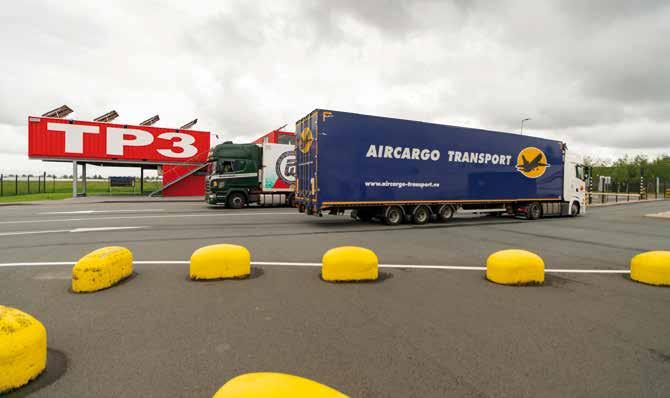
4 minute read
Cargo damage app
by Cargomedia
Simplifies cargo claim reporting between handling agent and airline
Effective accurate cargo claim reporting serves an important purpose. It enables the airline to inform the shipper on a timely basis of possible service failures and, for example, to obtain additional instructions regarding re-packing of a consignment. Good damage documentation also helps to speed up the course of claims. The details can also be used as a base from which to learn from mistakes in the process and to implement quality improvements.
Advertisement
Text Esther Kort-Boreas Photography AirBridgeCargo Airlines,
Menzies World Cargo
Luckily, damage occurring is an exception rather than the rule but any damage must be reported to the carrying airline. The way in which that used to occur urgently needed modernising. We discussed this with Henk-Jan van Keulen, Country Manager the Netherlands, AirBridgeCargo Airlines and Erwin Roeleveld, Project Leader Cargo Operations, Menzies World Cargo (Amsterdam), the airline’s handling agent.
Erwin: “In the old situation if damage to a consignment was discovered a report would be drawn up in Word or Excel. Photographs were attached later. Everything was done on a desktop computer, i.e. not directly at the location of the damage. Then the question arose: to whom do we send the report? The correct email addresses for the relevant people at the airline had to be looked up. If, in the meantime, an employee had left the airline then the question arose who had taken over his or her tasks? Not very efficient, of course, but at that time there was no alternative.”
“In order to be able to optimise the process, a few years ago we started using an internet-based application from CargoHub to replace Word and Excel. This was far more practical as all information was saved in a central database that integrated directly into our quality management system. However, a few limitations remained: it was still necessary for designated employees to authorise the sending of the report; the damage report gave our employees too much leeway for their ‘own interpretation’; and the report still had to be created on a desktop computer. Last but not least, the selection of the correct contact person and the actual sending of the report were still manual processes.”
In response to input from Menzies, the application has been further developed over the past 24 months and is now part of the Cargo Claims Loss Prevention Program (www.cclp. aero) for airlines and handling agents.
Erwin: “Damage reports can now be created on site with help from a very user-friendly mobile app and photographs can be directly uploaded. The questionnaire is clear for our employees and the application effectively calculates both the classification of the damage and financial risks. Liability for the airlines and handling agents is based on a per kilogram
amount and the application makes the risks transparent. No longer do we need to look up the correct email addresses at the airline and, in our case, reports are automatically despatched within 30 minutes of being prepared. In this way we always satisfy the damage reporting requirements stipulated in the Service Level Agreement with the airline.”
Improving quality and efficiency
Erwin: “The ‘root cause investigation’ is an essential part of the claim handling process. It is also possible to record details regarding the cause of damage for internal use. The real-time damage details in the CCLP program give us an insight into, amongst other things, the frequency, the nature, the location and the cause of the damage. This allows us to initiate improvements to avoid damage occurring and to improve the quality of our service.”
“The threshold for entering a damage report in the app must be as low as possible. Our Warehouse Management System contains the data of all consignments. The link between our WMS and the CCLP application means that details no longer have to be manually input from one system into the other. With it we are working more efficiently and the airline is provided with a damage report more quickly.”
Added value from an airline perspective
Henk-Jan: “The system is a huge improvement when compared to the old method. Previously we would receive various loose documents and photographs and now everything is organised in the one system. On the basis of a clear overview, it can be decided sooner what follow-up is required. Can the consignment proceed on its way or should the damaged package be stopped? The report we receive is in a small PDF format and we have access to all damage reports via the mobile CCLP app. We can set the despatch details of the damage reports so that the origin and destination stations can also be included. We can now immediately share all the damage reports we receive with the customer who sent the consignment and thus we have elevated our customer service to a higher level.”
“A tip for the developer: It would be really useful if we, as the airline, could also load our own photographs of a consignment into the CCLP app. Ideally we would like, literally, to press the red button on the app and immediately be able to stop a consignment. Of course, we understand very well that this action has to be undertaken via Menzies’ Warehouse Management System.”
Both gentlemen conclude: “The CCLP application has already proven its added value for the claims handling process. It has a simple functionality and communication about damage is more efficient and much improved.”
More information
www.airbridgecargo.com www.menziesaviation.com










